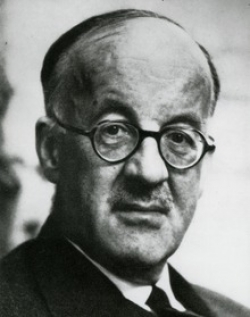Sir John Gaddum

- Born
- 31 March 1900
- Died
- 30 June 1965 (age 65)
Sir John Gaddum was a prosperous academic who made several important observations in pharmacology. Much of his work is notable, not least discovering a substance found in our brain and intestines called Substance P, which is vital for life and associated with inflammation and pain.
Sir John was born in Cheshire in 1900. He trained as a Physiologist at the University of Cambridge, achieving his bachelors in 1922 and his MD in 1925 from the University College London.
From there, he began work at the National Institute for Medical Research, where he helped to develop classical laws which outline what happens when two or more drugs, which have opposite effects on the body, interact with each-other. It was here that John married his wife, Iris Mary Harmer.
In his research, he went on to show that Adrenaline, a hormone in our blood, is released by our nerves. He also showed with another scientist, Ulf von Euler, the role of a different hormone, Acetylcholine, in the communication between two or more nerves.
In 1933, he took up a Professorship at the University of Cairo teaching Pharmacology where he stayed for two years before returning to the UK to take a Chair at University College London and later at the University of London.
During 1940-42 and the height of the Second World War, John Gaddum, like many of his academic peers, studied chemical warfare. He focused on the toxicity of gases used in warfare, from treating its effects to offering advice on defensive and offensive strategies, with one report outlining his reported feasibility of poisoning the enemy’s water supplies with capsaicin (the active component of hot chillies). By the end of his time with the Army, Sir John had become a Lieutenant Colonel.
In 1942, he travelled to Edinburgh to again take up a Professorship in Pharmacology at their University, which he remained at for 16 years before becoming the Director of the Institute of Animal Physiology, an independent charitable life sciences institute near Cambridge involved in biomedical research.
His later work looked at another hormone, Serotonin, which he proposed had a role in the regulation of mood. In association with this, he researched the psychedelic drug known as LSD, which he hoped would give him a better understanding of serotonin. It is reported that Sir John performed a self-experiment with LSD to record its effects under supervision of his research team.
In 1964, he was appointed Knight Bachelor and invested by HRH The Duke of Edinburgh. Sir John was also a founding member of the British Psychological Society and served repeatedly on its committees. In 1945, he proposed the founding of the British Journal of Pharmacology and became its first chair of the editorial board.



